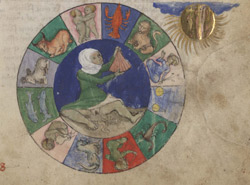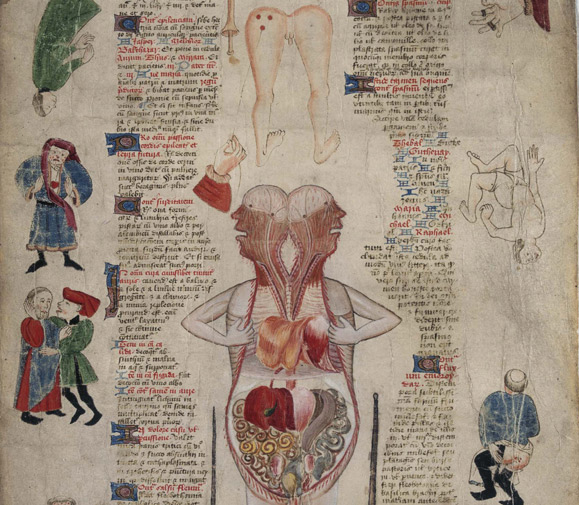The new exhibition at the Fondation Martin Bodmer, called La médecine ancienne, du corps aux étoiles,(Ancient medicine, from the body to the stars) invites you to discover the art of healing from the perspectives of history, science and art. Human knowledge is built from mythology up to the concepts of the XVIIth century through very diverse influences. Each era, swaying between continuity and ruptures, progress and failures, has contributed to the care of the human body and to the preservation of life, and in doing so has revealed itself to be creative.
Four years of investigation
The public at large, and doctors and scientists as well are invited to a discovery of the origins of the art of medicine. Practice, experience and observation are a science, but they also find support in art, philosophy and literature. Medicine today can enrich itself with its history and its diversity. Through four years of work by the scientific curator of the exhibition, Dr. Gérald Andiran, the Fondation Martin Bodmer has been able to associate to this project thirty-five Swiss and international institutions, and seven private collectors. Consequently 250 works are presented; eighty of them for the first time in Switzerland, of which twenty had never been lent before.
Between primordial water and melancholy
The visit of the exhibition allows one to discover both the reality and the imaginary in the art of healing. It goes from Antiquity to Modern Times, and in its first part it follows the chronology: Mesopotamia, Egypt, Greece, around Hippocrates, Rome, around Galen, then the Orient, whether Persian, Arab or Nestorian. Then come the Middle ages, with the encyclopedias to gather tradition, with alchemy, received from the Arab world, the virtues of primordial water, the concept of the zodiacal man, as well as the origin of hospitals, popular medicine, the attention given to the body and the soul, melancholy, the images of earth and the art of dying, beginning with Egypt, which close the first section.
 “Woman of the zodiac”, Aurora Consurgens, alchemy treaty, beginning of the XVth century
Ms. Rheinau 172 © Zentralbibliothek Zürich.
The second part of the exhibition presents the pharmacopoeia drawn from the Greek, Latin and Medieval herbarium. We then come up to the matters of diagnosis and prognosis, through blood and urine tests and reading the stars. Surgery is the other major aspect of this part of the exhibition, which extends with full windows dedicated to the outbreak of major epidemics. The last part focuses on the foundations of modern medicine that we owe to the great figures of the Renaissance: Fracastorios for infectiology, Vesale for anatomy, Fernel for
physiology and pathology, Paré for surgery and Paracelse for medical chemistry. William Harvey wraps up the exhibition with blood circulation and the birth of medical rationalism in the 17th century.
PUBLICATIONS:
•Catalogue La médecine ancienne, du corps aux étoiles
Hard cover, 592 pages, 450 photographic reproductions, 100 scientific contributors.
•French edition: Fondation Martin Bodmer (Cologny) - Presses universitaires de France (Paris)
•English edition: Fondation Martin Bodmer (Cologny) - Schwabe A.G. (Basel)
To see more illustrations, click on VERSION FRANCAISE at the top
of this page
| 








